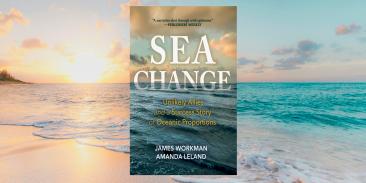D.C. Court of Appeals rejects petitions to strengthen primary air quality standards for smog
(Washington, D.C. – July 23, 2013) Today, a panel of the U.S. Court of Appeals for the D.C. Circuit rejected petitions for stronger, more protective air quality standards for ground-level ozone pollution – commonly known as smog.
The court affirmed the Environmental Protection Agency’s (EPA) current smog standard in spite of strong scientific evidence that currently allowed ozone levels continue to endanger Americans’ health.
“Today’s court decision is deeply disappointing in light of the compelling body of scientific evidence showing the health hazards of ozone pollution at levels below the current standard,” said Peter Zalzal, an attorney for Environmental Defense Fund (EDF). “Ozone is a corrosive air pollutant linked to aggravation of asthma, serious bronchial conditions, and other serious health harms – including premature death.”
In 2008, EPA set national ozone standards in 2008 at 75 parts per billion – despite of unanimous advice from the statutorily-established Clean Air Scientific Advisory Committee (CASAC) and from the nation’s leading medical societies that called for a more protective standard.
States and cities – including New York, California, Connecticut, Delaware, Illinois, Maine, Maryland, Massachusetts, New Hampshire, New Jersey, New Mexico, Oregon, Rhode Island, the District of Columbia, the City of New York, and the California Air Resources Board – sued to strengthen the ozone standards consistent with rigorous scientific evidence.
Earthjustice represented the American Lung Association, EDF, NRDC, National Parks Conservation Association, and Appalachian Mountain Club in pressing for a more protective standard.
While today’s decision declined to require a more protective health standard as these groups urged, the court did agree that EPA’s secondary standard, which is designed to protect damage to vegetation and ecosystems, violated the Clean Air Act. The court remanded this portion of the rule for further explanation or reconsideration by EPA.
“The scientific evidence for a more protective standard has only become stronger since 2008,” said Elena Craft, Health Scientist for EDF. “Notwithstanding today’s decision, EPA must move forward with stronger standards to protect Americans’ health with an adequate margin of safety in its legally-required review of the 2008 standard, which is now underway.”
There are proven, cost-effective solutions available that can help protect Americans from smog. Those solutions include: EPA finalizing the “Tier 3” emission standards for cleaner cars and cleaner gasoline; strengthening emission standards for oil and gas development activities; and cutting the smog-forming emissions from coal-fired power plants.
With more than 3 million members, Environmental Defense Fund creates transformational solutions to the most serious environmental problems. To do so, EDF links science, economics, law, and innovative private-sector partnerships to turn solutions into action. edf.org
Media Contact
Latest press releases
-
New Analysis Finds Indigenous Lands and Protected Areas Are Key in Slowing Deforestation; Without them Brazilian Amazon Forest Loss Would be 35% and Carbon Emissions 45% Higher
October 28, 2025 -
New Poll: Republicans, Democrats and Independents Strongly Oppose Weakening Chemical Safety Law
October 27, 2025 -
Court Rules New York Must Implement State Climate Law and Deliver Swift Action
October 24, 2025 -
EDF Goes to Court to Help Defend California Climate Risk Reporting Laws That Protect People from Financial Damage
October 24, 2025 -
Oregon Water Partnership Applauds Gov. Kotek’s Executive Order to Promote Resilience of Communities and Natural Working Lands and Waters
October 23, 2025 -
Community, Health and Environmental Groups Sue to Stop President Trump’s Unlawful Toxic Air Pollution Exemptions
October 22, 2025











